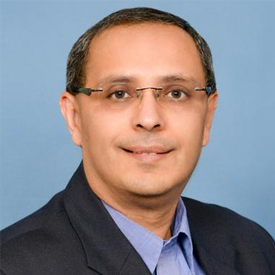
Dr. Atul Varadhachary
Managing Partner at Fannin Innovation Studio
Dr. Atul Varadhachary is Managing Partner at Fannin Innovation Studio which works with innovators at the institutions in the Texas Medical Center in Houston to help commercialize early-stage technologies in the life sciences. Atul is a physician with a PhD in Physiology from Johns Hopkins, and over two decades of experience in life sciences and healthcare. Before Fannin, Atul served as President of U.S. operations at Reliance Life Sciences, part of the Reliance Group, India’s largest private sector enterprise, as President & COO of Agennix Inc., a latestage biotechnology company and as Senior Engagement Manager at McKinsey & Co. He has served on the faculties of Baylor College of Medicine, Rice Graduate School of Management, and the UT School of Public Health. He has served on multiple company and community boards including the Harris Health System and the Center for Public Policy Priorities (CPPP), and is on the Healthcare Advisory Committee of the Greater Houston Partnership. Atul has been associated with the ASER Centre since its inception and has served on its board for over a year. He has been associated with Pratham for over fifteen years and co-founded Pratham Health (Niramaya Health Foundation) while on a leave of absence from McKinsey. He has served as President of Pratham USA and serves on the Pratham Education Foundation and Niramaya Boards.
